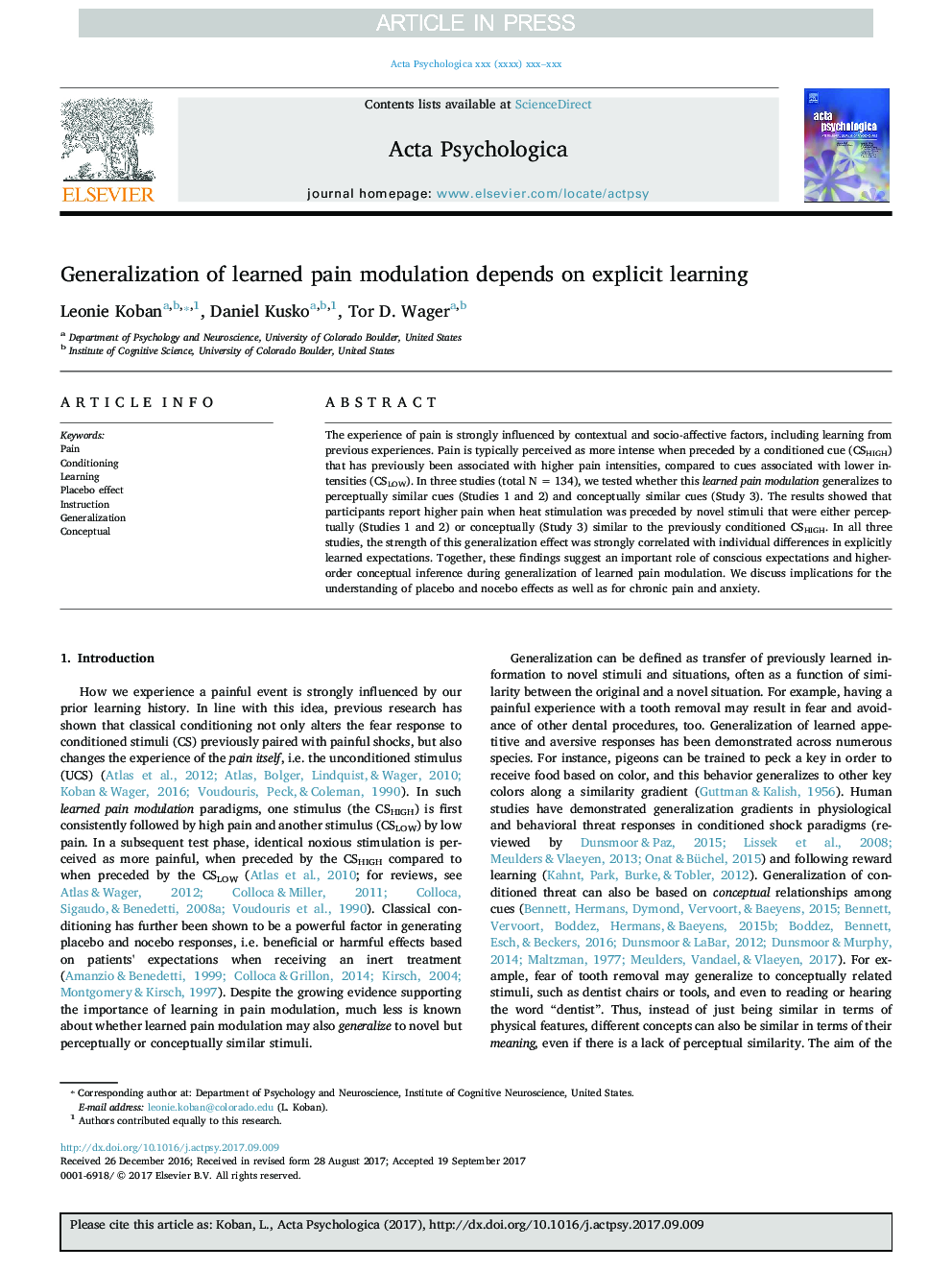| Article ID | Journal | Published Year | Pages | File Type |
|---|---|---|---|---|
| 7276797 | Acta Psychologica | 2018 | 10 Pages |
Abstract
The experience of pain is strongly influenced by contextual and socio-affective factors, including learning from previous experiences. Pain is typically perceived as more intense when preceded by a conditioned cue (CSHIGH) that has previously been associated with higher pain intensities, compared to cues associated with lower intensities (CSLOW). In three studies (total NÂ =Â 134), we tested whether this learned pain modulation generalizes to perceptually similar cues (Studies 1 and 2) and conceptually similar cues (Study 3). The results showed that participants report higher pain when heat stimulation was preceded by novel stimuli that were either perceptually (Studies 1 and 2) or conceptually (Study 3) similar to the previously conditioned CSHIGH. In all three studies, the strength of this generalization effect was strongly correlated with individual differences in explicitly learned expectations. Together, these findings suggest an important role of conscious expectations and higher-order conceptual inference during generalization of learned pain modulation. We discuss implications for the understanding of placebo and nocebo effects as well as for chronic pain and anxiety.
Related Topics
Life Sciences
Neuroscience
Cognitive Neuroscience
Authors
Leonie Koban, Daniel Kusko, Tor D. Wager,
